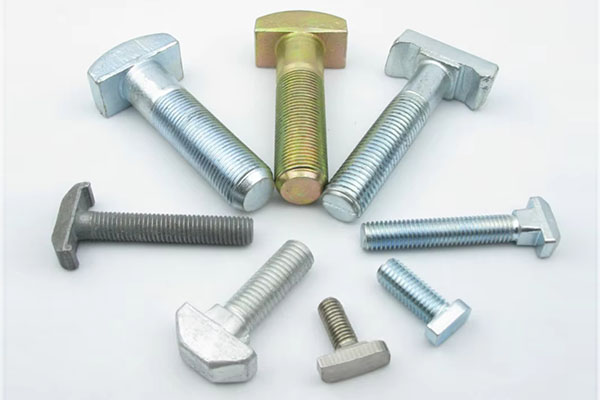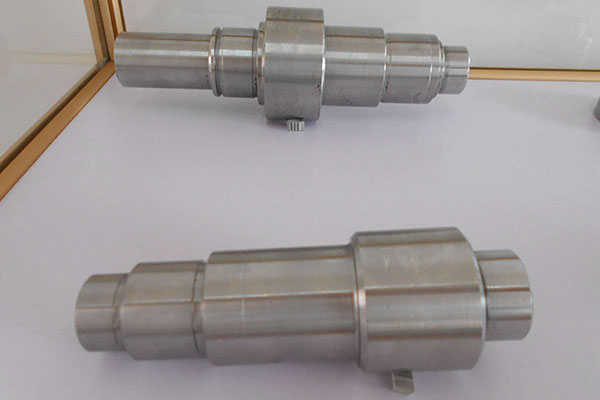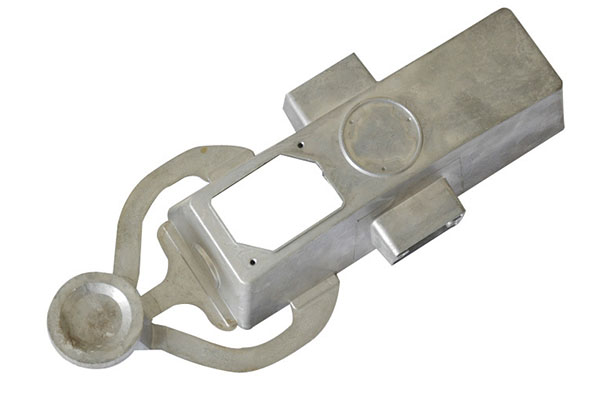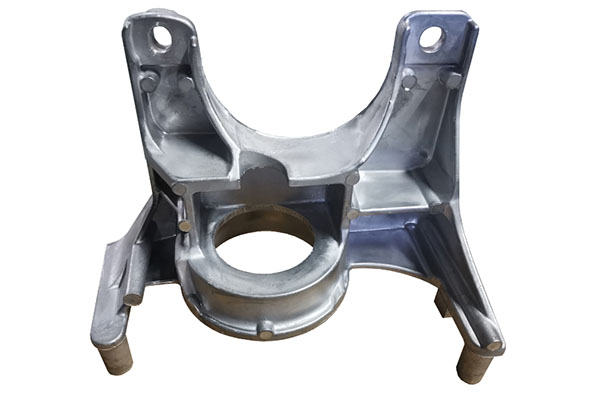Materiales de las piezas metálicas de zinc
Zinc, a key metal found all over nature, is super useful in many different areas thanks to its unique traits. It's a shiny silver metal that can stretch well and resist rust. At room temperature, zinc is a bit brittle and hard to shape. But if you heat it up to between 100-150°C, it gets softer and easier to roll, press, or pull into sheets, foils, bars, and wires. This makes zinc really important in making things for industry.
You can find zinc in lots of stuff we use every day, from simple items to high-tech gadgets. For instance, it's often used in making parts for machines and instruments, as well as in battery production (especially dry cells), alloys like brass and bronze, zinc oxide paints, fertilizers, synthetic rubber, lubricants, ointments, adhesives, soaps, and even glass. Compounds of zinc, such as zinc sulfate, zinc chloride, and zinc nitrate, are also widely used in medicine, chemicals, and dyeing industries.
Servicio de fabricación de piezas de metal de zinc
Be good at product structure optimization and greatly reduce the cost of Zinc Metal Parts Materials

Diseño de piezas
Diseño Estético y Estructural

Realización de moldes
Diseño, Confirmación de Facilidad de Manufactura

Producción de Producto
Imported, high-speed equipment

Armado del Producto
Materia Prima, Inspección y Montaje
Model classification of Zinc Metal Parts Materials
The Zn1 series is the highest purity zinc material, with a total impurity content of no more than 0.01%. Due to its high purity, the Zn1 series is mainly used to manufacture products with extremely high purity requirements, such as precision parts in the mechanical and instrumentation industries. In addition, the Zn1 series is commonly used in the manufacturing of electroplated anode plates and printed zinc plates to ensure product quality and performance.
The impurity content of Zn2 series is slightly higher than that of Zn1 series, but it still maintains a high purity. This series is mainly used for manufacturing parts for the mechanical and instrumentation industries, as well as printing zinc plates. The Zn2 series materials not only ensure product quality but also have high cost-effectiveness, making them suitable for most industrial applications.
The impurity content of Zn3 series has further increased, but it can still meet the needs of many industrial applications. This series is mainly used for manufacturing parts for the mechanical and instrumentation industries, as well as printing zinc plates. The Zn3 series materials have achieved a good balance between cost and performance, making them the preferred choice for many enterprises.
The Zn4 series has the highest impurity content, but it can still be used in some situations where purity requirements are not particularly high. This series is mainly used for manufacturing parts for the mechanical and instrumentation industries, as well as printing zinc plates. The Zn4 series materials are more competitive in price and suitable for large-scale production and application.
The Zn5 series is mainly used to manufacture wire embedding zinc plates for printing wire embedding. This material has good conductivity and processability, which can meet the special needs of the printing industry.
Machining Process of Zinc Metal Parts
Zinc materials can be processed in various ways to meet different needs. Here are some common methods of processing zinc:
Cold Processing:
Cold processing includes techniques like cold heading, cold forging, cold riveting, spinning, and riveting. These methods are usually done at room temperature without heating the material. Cold processing helps make better use of the material, reduces waste, speeds up production, and makes the product more uniform and dense. It's great for making high-precision and high-strength items like fasteners and springs.
Hot Processing:
Hot processing involves methods such as hot top casting, semi-continuous casting, or horizontal continuous casting, mainly used to produce ingots. This type of processing makes it easier to shape and form the material. It's suitable for making large castings and complex shapes. For example, zinc alloys can be used to make car parts and appliance casings.
Other Processing Methods:
In addition to cold and hot processing, zinc can also be processed by extrusion, rolling, and drawing. Extrusion is when metal is pushed through a die to create the desired shape; rolling involves passing metal through rollers to flatten it into sheets; and drawing stretches the metal to make it longer and thinner. These methods further change the shape and size of the material to fit specific needs.
Overall, zinc is widely used in many fields due to its unique properties. By using different processing methods, zinc can be made into various shapes and sizes to suit different applications. Whether it's high-purity Zn1 or cost-effective Zn4, zinc plays a vital role in modern industry.
FAQ About Zinc Metal Parts
Zinc parts offer several significant advantages. For starters, they're highly durable and can withstand harsh environments, making them ideal for outdoor applications. Additionally, zinc is naturally corrosion-resistant, which means it doesn’t rust easily, even when exposed to moisture or chemicals. This makes zinc parts perfect for use in automotive, construction, and industrial settings where longevity matters. Furthermore, zinc is relatively lightweight compared to other metals like steel, which can help reduce overall product weight and improve efficiency. Finally, zinc is cost-effective and easy to work with, allowing for complex designs and custom shapes without breaking the bank.
When comparing zinc and aluminum parts, there are a few key differences to consider. First off, zinc tends to be more affordable than aluminum, making it a budget-friendly option for many projects. However, aluminum has a higher strength-to-weight ratio, meaning it's lighter yet stronger than zinc. This can be crucial in applications where weight savings are essential. On the other hand, zinc's natural corrosion resistance gives it an edge over aluminum in environments where exposure to moisture or chemicals is common. In terms of machinability, both metals are quite good, but zinc might be slightly easier to machine due to its lower hardness. Ultimately, the choice between zinc and aluminum will depend on the specific requirements of your project, including factors like budget, weight, strength, and environmental conditions.
While zinc parts have many benefits, there are a few downsides to keep in mind. One major drawback is that zinc isn’t as strong as some other metals, such as steel or titanium. This can limit its use in high-stress applications where structural integrity is crucial. Another potential issue is that zinc can develop a patina over time when exposed to certain elements, which might affect its appearance and, in some cases, its functionality. Additionally, while zinc is generally easy to recycle, the recycling process can be more complicated compared to other metals like aluminum or copper. Despite these challenges, zinc remains a popular choice for many industries due to its unique combination of durability, affordability, and ease of use.
Yes, zinc parts can be used in high-temperature environments, but there are some important considerations. Zinc has a relatively low melting point (around 420°C or 790°F), so it’s not suitable for extremely high temperatures where it might start to soften or lose its shape. However, for moderate high-temperature applications, zinc can perform well due to its good thermal conductivity and stability up to around 250°C (482°F). It’s also worth noting that zinc doesn’t emit harmful fumes when heated, making it safer to handle at elevated temperatures compared to some other metals. If you need parts for very high-temperature environments, you might want to consider alloying zinc with other metals to improve its heat resistance or look into alternative materials altogether.
Maintaining and cleaning zinc parts is relatively straightforward but important for ensuring their longevity. To keep them looking their best and functioning properly, regular cleaning is key. Start by wiping down the parts with a soft cloth to remove any surface dust or dirt. For more stubborn grime, use a mild soap solution and a soft brush. Avoid using abrasive cleaners or tools that could scratch the surface of the zinc. After cleaning, make sure to dry the parts thoroughly to prevent water spots or rust formation. Periodically inspect your zinc parts for signs of wear or damage and address any issues promptly to avoid further deterioration. With proper care, zinc parts can last for many years, providing reliable performance throughout their lifespan.
Zinc parts are incredibly versatile and find applications across numerous industries. In the automotive industry, zinc is commonly used for die casting parts like door handles, gear shift levers, and various interior components due to its excellent corrosion resistance and ability to withstand vibrations. The construction industry utilizes zinc for roofing materials, gutters, and flashing because of its durability and weather resistance. In electronics, zinc is often found in batteries and electrical contacts thanks to its good conductivity and low cost. Even in consumer goods, zinc plays a role in items like zippers, buttons, and various decorative pieces due to its malleability and attractive finish. Overall, zinc’s unique properties make it a valuable material for engineers and designers alike.